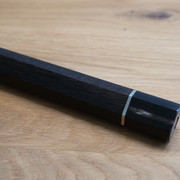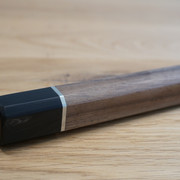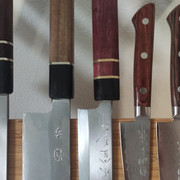Have been tinkering off and on with this handle for a few weeks. The handle body is katalox, very dense dark wood. The spacers are aluminum and g10, and the ferrule is horn. It was an interesting project. Trying to both size it to my hand and to try and maintain the balance point where I like it to be. Generally speaking, it is a decent 1st attempt.
Now I just have to fix the blade, which needs considerable work as well.



Now I just have to fix the blade, which needs considerable work as well.













